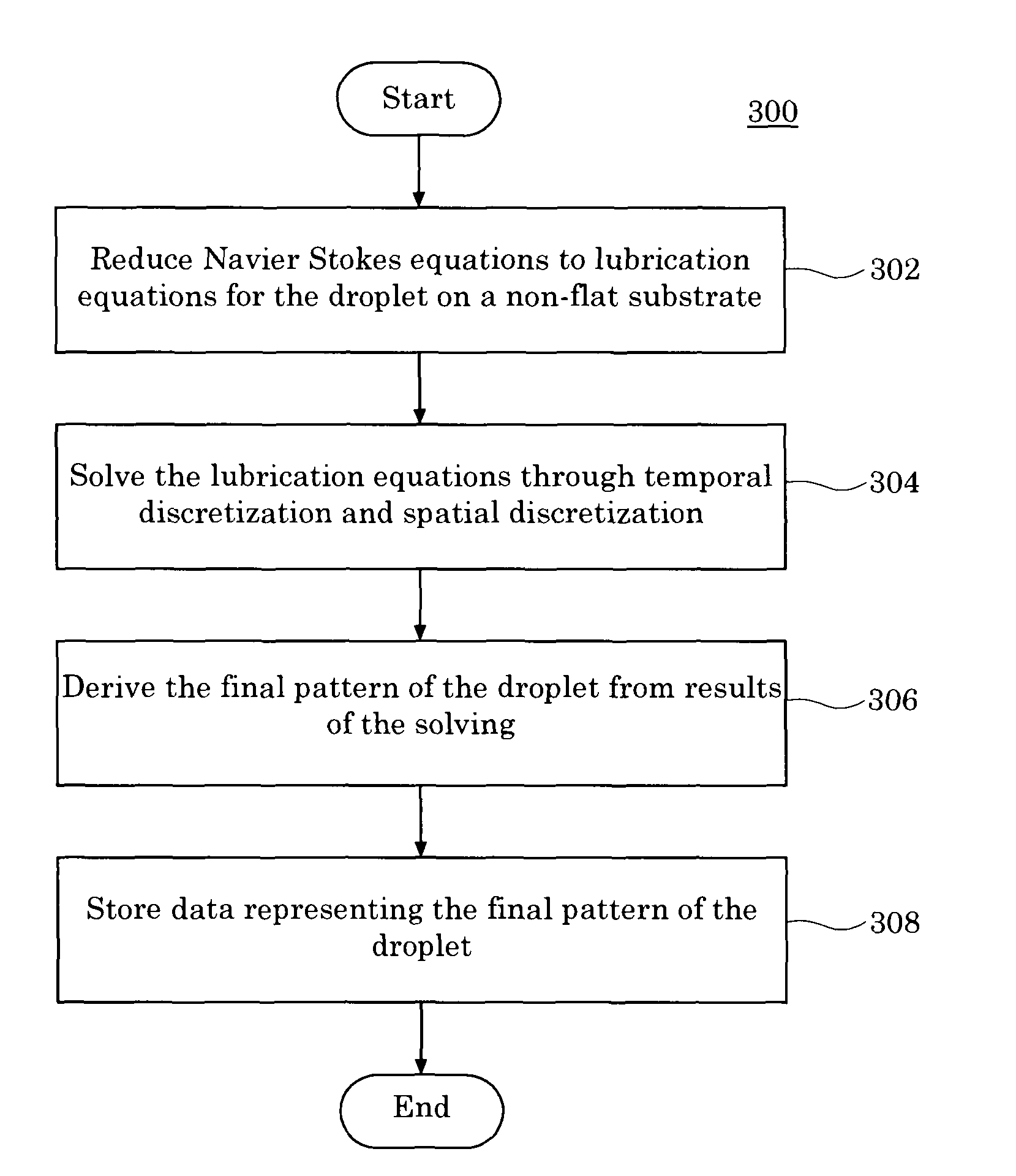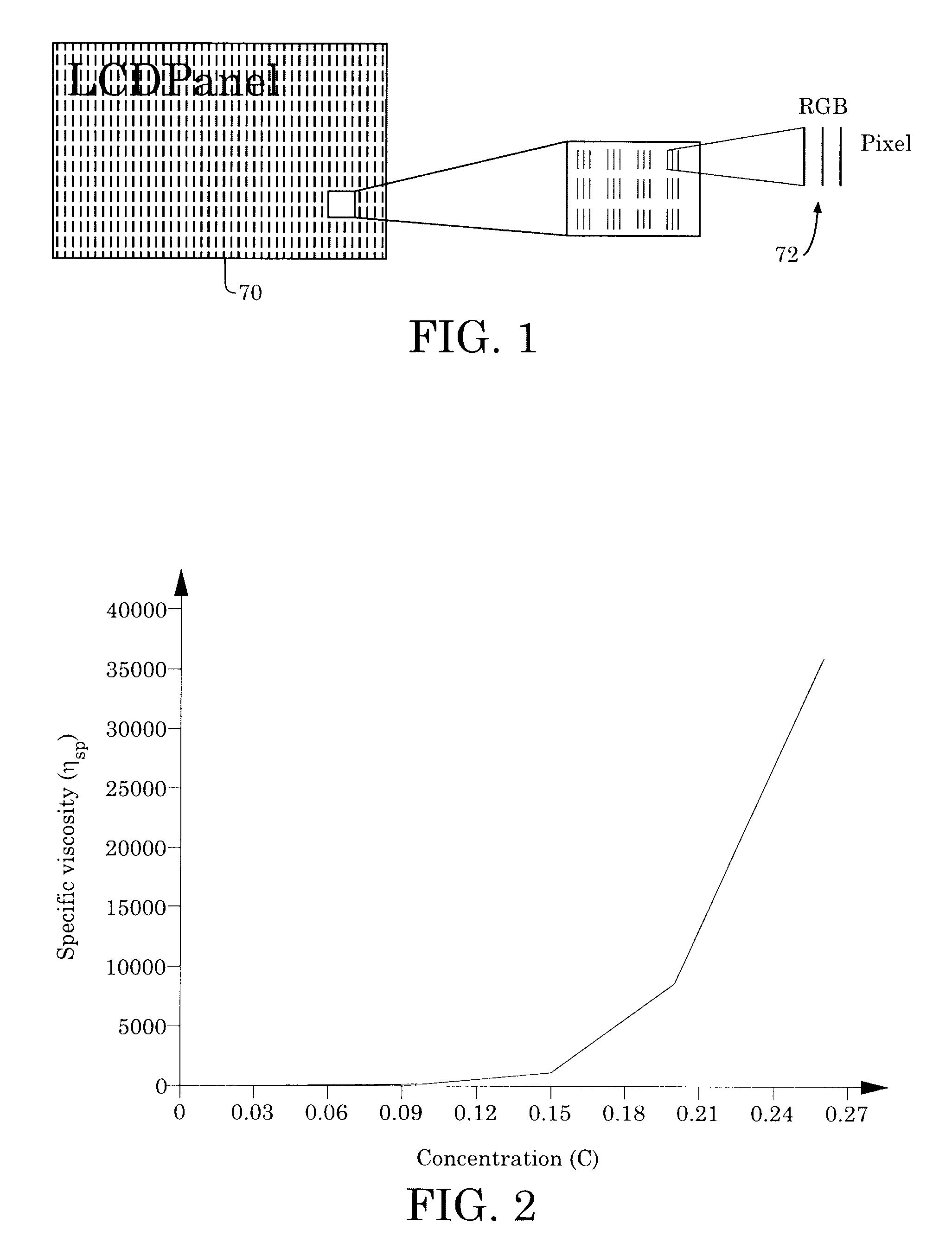Finite difference algorithm for solving lubrication equations with solute diffusion
a technology of lubrication equation and difference algorithm, which is applied in the direction of instruments, analogue processes for specific applications, electric/magnetic computing, etc., can solve the problems of difficult to use traditional direct simulation methods to simulate the whole process, and the application of lubrication equations is limited to flat surfaces
- Summary
- Abstract
- Description
- Claims
- Application Information
AI Technical Summary
Benefits of technology
Problems solved by technology
Method used
Image
Examples
Embodiment Construction
ention;
[0025]FIGS. 6A-B are illustrations of the evolution of the droplet's height over time as a result produced by an embodiment of the invention;
[0026]FIG. 6C is an illustration of an intermediate variable over time as a result produced by an embodiment of the invention;
[0027]FIG. 7 is a simplified schematic diagram illustrating a system utilized to implement one or more aspects of the present invention; and
[0028]FIG. 8 is a flowchart diagram illustrating method operations for simulating the final pattern for a droplet in accordance with one embodiment of the invention.
DESCRIPTION OF THE PREFERRED EMBODIMENTS
[0029]The present invention relates to systems and methods for simulating the evolution of a droplet drying on a substrate. In an embodiment of the present invention the droplet may be produced using inkjet technology. The present invention may be used to simulate the evolution of droplets produced using other techniques without going beyond the spirit and scope of the presen...
PUM
 Login to View More
Login to View More Abstract
Description
Claims
Application Information
 Login to View More
Login to View More - R&D
- Intellectual Property
- Life Sciences
- Materials
- Tech Scout
- Unparalleled Data Quality
- Higher Quality Content
- 60% Fewer Hallucinations
Browse by: Latest US Patents, China's latest patents, Technical Efficacy Thesaurus, Application Domain, Technology Topic, Popular Technical Reports.
© 2025 PatSnap. All rights reserved.Legal|Privacy policy|Modern Slavery Act Transparency Statement|Sitemap|About US| Contact US: help@patsnap.com



